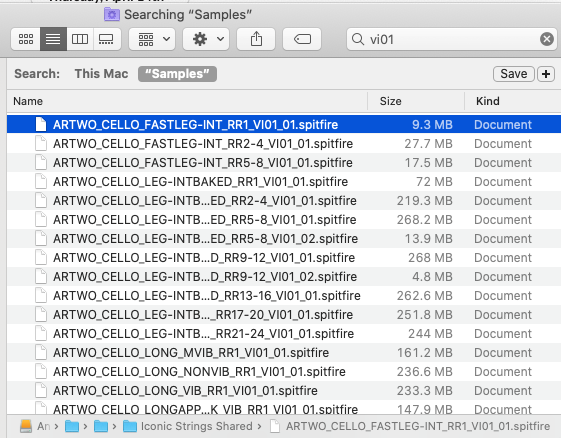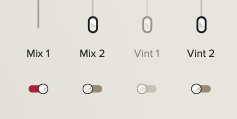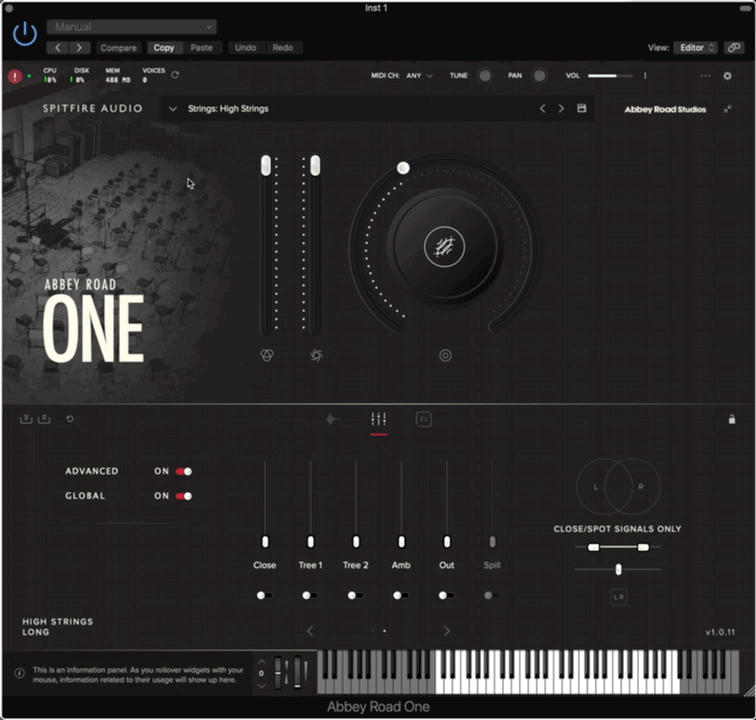Abbey Road Two: Iconic Strings Professional gives you a large array of different microphone positions to choose from. Having access to these additional microphone signals can give you a great amount of control, however they can also take up a large amount of hard drive space.
If there are certain signals that you feel you don't need, you can free up some space by deleting the specific signals from the samples folder. It should be noted that before removing microphones, you should consider backing these up. If they are not backed up and deleted from your system, in order to get them back, you will need to reinstall the entire library again.
Identifying The Microphone Signals
In Abbey Road Two: Iconic Strings, we have 12 unique microphone signals available. In your library Samples folder you'll see that these signal names have been abbreviated at the end of the sample files. Below is a chart displaying the abbreviations of each signal:
| Signal | Abbreviation | Signal | Abbreviation |
| Mix 1 | mi01 | Cl Cond | cl04 |
| Mix 2 | mi02 | Cl Rbn | cl05 |
| Vint 1 | vi01 | Cl Vint | cl01 |
| Vint 2 | vi02 | St Rbn | st03 |
| LCR 1 | st01 | St Mid | st04 |
| LCR 2 | st02 | Amb | am01 |
Removing A Microphone Signal
In this example we will be removing the Vint 1 microphone position from my Abbey Road Two samples folder.
1) First, we need to open our Spitfire Audio - Abbey Road Two folder, and from here go into Samples.
2) In Samples you should see 2 folders: Iconic Strings Professional and Iconic Strings Shared.
3) In each folder, or indeed within the main Samples folder, you can use the search function to find all of the Vint 1 signals available. As the abbreviation for Vint 1 is "vi01", we'll need to put that into our search filter.

4) From here, press Ctrl + A on Windows, or Cmd + A on Mac OS to highlight all of the found files. Next, press delete.
5) When you next open the plugin you should see that the Vint 1 microphone is now unavailable.

6) Repeat this process to remove any additional microphones as needed.
7) Please note: When you next open the plugin, you will see an Error 4 message in the top left- which means that samples are missing. To bypass this error, enable the "disable missing samples" warning in your plugin settings. It's worth noting that this setting will disable all missing sample messages, so if you're troubleshooting an issue with support be sure to turn this setting off.
(Abbey Road One Interface below has the same plugin setting procedure as Abbey Road Two)

8) The plugin should now have no errors, and the microphone(s) you have removed should be unavailable (faded out from the interface). If you wish to regain the mic signal, and have backed up the files (as recommended), simply drop the files back into the relevant samples folder. If you have any further issues, please contact support using the Help widget below.